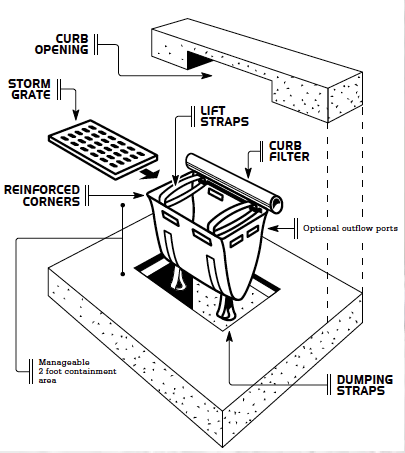
When driving by active construction sites, you may have noticed sporadically placed haybales, wooden frame structures with stone surround, or even mesh-like fabric sticking out of the ground around a storm sewer grate. What you may not have realized was that these devices are known as Storm Sewer Inlet Protection, section 28-1 of the New Jersey Standards for Soil Erosion and Sediment Control. Inlet protection comes in a variety of different designs, as noted above, but ultimately have the same goal – to prevent the flow of larger sediment particles and construction debris into the storm sewer system. By retaining excess sediment from cleared and graded construction sites, inlet protection plays a vital role in maintaining the health of local waterways.
While the specific design of inlet protections can vary and be installed per the preference of the project site manager or design engineer, a few critical design criteria must be implemented. The chosen protective device must slow the speed of storm water flow to properly filter out larger sediment particles and debris. The designed protection must not completely close off the drainage purpose of the inlet, i.e., water must be able to pass through, thus preventing flooding hazards in the adjacent areas. Lastly, the chosen inlet protection shall be able to filter runoff from a higher flowing 1 year, 24-hour storm event. As with any temporary control devices on construction sites, inlet protection requires frequent inspection, and any maintenance or repair shall be completed immediately to ensure the integrity of the designed protection system.

